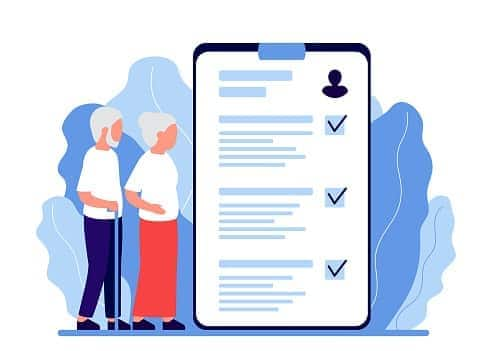What is catastrophic health insurance?
A catastrophic health insurance plan is an ACA plan that offers low monthly premiums with a high deductible. It’s designed to provide a low-cost alternative for people who don’t anticipate a lot of regular healthcare costs.
What does catastrophic health insurance cover?
Catastrophic health plans cover up to three doctor visits each year, as well as routine vaccines and preventative care. Catastrophic health insurance also covers the 10 essential services required by the ACA after the deductible is met:
- Emergency services
- Outpatient care and physicians
- Hospitalizations
- Pregnancy, maternity and newborn
- Mental health and substance abuse disorder
- Prescription drugs
- Rehabilitation services
- Lab work
- Preventative, wellness and chronic disease management
- Pediatric services, including dental and vision
What does catastrophic health insurance not cover?
A catastrophic plan won’t cover anything other than three office visits and preventative care until your deductible is met.
In addition, exclusions on catastrophic plans are similar to any other health insurance plan. Plans may vary by provider, but most don’t cover elective procedures, such as cosmetic surgery. Experimental treatments are also commonly excluded.
Who qualifies for a catastrophic health plan?
Unlike other health plans, the ACA limits catastrophic health insurance to only two groups of people:
- People under 30
- People over 30 who qualify for hardship and affordability exemptions
Possible reasons for hardship exemptions are:
- Eviction
- Homelessness
- Facing eviction or foreclosure
- Bankruptcy
- Domestic violence
- Damages to your home in a disaster
- A sudden need for you to care for a disabled or aging family member
Go to your state’s health insurance exchange to see if you qualify for a hardship exemption. Catastrophic health plan quotes should appear when you search for plans if you’re eligible. If you don’t see the option, you can request a hardship exemption.
How much is catastrophic health insurance?
The average cost of catastrophic insurance ranges from $200 to $300 a month.
However, catastrophic plans have a much higher deductible of $9,200 in 2024, according to KFF, and will go up to $10,600 in 2026. Only preventative care and three office visits each year are exempt from the deductible.
For comparison, here's the average monthly cost for other ACA tiers:
- Lowest-cost bronze plan: $381
- Lowest-cost silver plan: $486
- Lowest-cost gold plan: $507
One benefit of a catastrophic health plan is that, unlike other health plans, catastrophic health insurance doesn't have coinsurance. It will cover you at 100% after you meet the deductible.
How to get a catastrophic health plan
If you qualify, you can get a catastrophic health plan through your state’s ACA marketplace, also called the exchanges. You can start by going to healthcare.gov, which will help you find your state’s page.
If you are applying based on hardship, you can fill out an application requesting a hardship exemption and submit it to your state.
Health insurance finder tool

COBRA
Learn more about COBRA
How much is your annual household income?
How many members are in your household?
Medicare
Medicare costs vary depending on which option you choose.
Learn more about Medicare costs.
Medicaid

Parent's employer-sponsored health insurance

Spouse's employer-sponsored health insurance

Employer-sponsored health insurance

Preferred-provider Organization (PPOs)
Preferred-provider organization (PPOs) plans are the most common type of
employer-based health plan. PPOs have higher premiums than HMOs and HDHPs, but
those added costs offer you flexibility. A PPO allows you to get care anywhere
and without primary care provider referrals. You may have to pay more to get
out-of-network care, but a PPO will pick up a portion of the costs.
Find out more about the differences between plansHealth maintenance organization (HMO)
Health maintenance organization (HMO) plans have lower premiums than PPOs.
However, HMOs have more restrictions. HMOs don't allow you to get care outside
of your provider network. If you get out-of-network care, you'll likely have to
pay for all of it. HMOs also require you to get primary care provider referrals
to see specialists.
Find out more about the differences between plansHigh-deductible health plans (HDHPs)
High-deductible health plans (HDHPs) have become more common as employers look
to reduce their health costs. HDHPs have lower premiums than PPOs and HMOs, but
much higher deductibles. A deductible is what you have to pay for health care
services before your health plan chips in money. Once you reach your deductible,
the health plan pays a portion and you pay your share, which is called
coinsurance.
Find out more about the differences between plansExclusive provider organization (EPO)
Exclusive provider organization (EPO) plans offer the flexibility of a PPO with
the restricted network found in an HMO. EPOs don't require that members get a
referral to see a specialist. In that way, it's similar to a PPO. However, an
EPO requires in-network care, which is like an HMO.
Find out more about the differences between plans
Learn more about individual insurance plans
Is catastrophic insurance worth it?
Catastrophic health insurance isn’t for everyone. Even if you are eligible, this type of plan might not be a good fit for you.
Catastrophic health insurance offers preventive care and protects you in case of emergencies. However, if you have prescriptions or have a condition that requires regular doctor visits, catastrophic health insurance is likely not a good fit for you.
There are other options to consider, some of which are low-cost:
- Medicaid. Medicaid is a federal/state health insurance program for low-income Americans.
- Other ACA plans. Subsidies are available if you meet income requirements, which can make other ACA plan options more affordable.
- Short-term health insurance. Short-term health plans have low premiums but are limited and are only a temporary solution.
- COBRA. If you recently lost your job, you may be eligible for COBRA, which allows you to keep your former employer’s health insurance, but is very expensive.
Catastrophic plans are one way to get affordable health insurance, but you may not qualify. Even if you do, out-of-pocket costs are high when you need care, so make sure to weigh the pros and cons of catastrophic health insurance before you buy.
Source:
KFF. "Average Marketplace Premiums by Metal Tier." Accessed August 2025.












